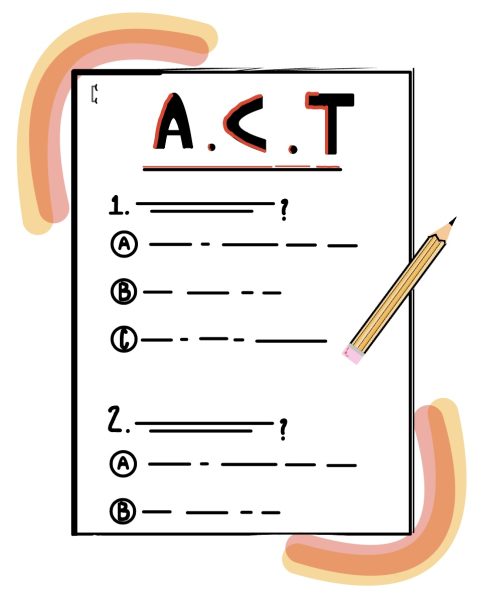With the PSAT just behind sophomores and juniors, and college applications growing more imminent each day for seniors, standardized testing is at the forefront of the minds of many students at Upper Arlington High School.
The PSAT is a College Board test for students to practice for the SAT. As it is a practice, this can leave students wondering why the school has all sophomores and juniors take the test. For juniors, the PSAT can be an important test to take as the score determines whether a student will qualify for National Merit scholarships. This does, however, beg the question: why do sophomores have to take it?
“It’s just for practice for sophomores to take the PSAT,” UAHS college counselor Kathy Moore said.
While the test may not be crucial in any way, it is still recommended for sophomores to participate as they may find the practice worthwhile, especially if they plan on taking the SAT or are aiming for scholarship money through National Merit.
While taking both the PSAT and the ACT for school is mandatory, those are not your only options for testing. Students are able to take the SAT and/or the ACT at testing locations throughout central Ohio on various Saturdays a couple of times throughout the year. These test dates can be found on the College Board and ACT website for the SAT and ACT, respectively. Registration and test center locations can also be found on those websites.
“We encourage students to start testing, like the outside testing, on Saturdays in December or January of junior year,” Moore said.
Moore recommended waiting until junior year because by then, students will have more of the curriculum under their belt.
“It’s nice for kids to be finished testing in the summer going into senior year, but you still have an opportunity,” Moore said.
Moore noted that although she recommends being finished with testing by the summer going into senior year, seniors still have the opportunity to take the ACT in September or the SAT in October and submit it for the Nov. 1 or Early Decision
application deadline.
Although sophomores take the PSAT just for practice, for the juniors, the PSAT serves as the National Merit Scholarship Qualifying Test, or NMSQT. A student’s score from the PSAT is then transformed into the student’s selection index by doubling the score of the student’s Reading and Writing, adding it to the student’s Math score, and then dividing the combined score by 10. Then, each state has its own cutoff for semifinalist based on these selection indexes, and there is a nationwide cutoff to receive
commended honors.
National Merit scholarships are earned through a combination of excelling in rigorous coursework and scoring impressive numbers on standardized tests. These tests include the College Board’s PSAT and SAT, the former acting as the qualifier that places high-performing students into mere consideration for financial rewards, and the ACT, run by the ACT Corporation. Annually, National Merit chooses around 50,000 U.S. high school juniors to be nominated and recognized for the scholarship
competitions. However, only an estimated 16,000 of these nominees are selected to move on to the semifinalist status, where
scholarships become available to apply for, according to nationalmerit.org.
In the class of 2025, seven students at UAHS qualified for the National Merit semifinals.
“I got 1510 on the PSAT, 1540 on the SAT and a 36 on the ACT,” said one qualifying student who wished to remain anonymous.
They believe the key factors to their success on these tests were to eat well and avoid being stressed, as well as practice.
“You can do the online tests on BlueBook, and then once you run out, you can buy more practice tests. I wouldn’t recommend buying big prep books. I would just buy the actual tests. Stay hydrated, good breakfast. That’s what I did, I got really good eggs and some bacon, a classic breakfast. As for the actual test, don’t get anxious,” the student said.

The ACT is being shortened in length from three hours to only two hours long.
Graphic by Elise Karas, ’26.
Overall, standardized testing is a great option for those who consider themselves good test takers, as they can show colleges, along with a transcript and personal essay, whether they are worthy of admission.

The ACT is changing to make the science section optional starting in Spring of 2025 for online and Fall of 2025 for paper tests.
Graphic by Elise Karas, ’26.
Although testing can be an important datapoint for colleges to see in addition to your GPA and course rigor, if a student struggles with testing, there is the option to apply test optional at the majority of colleges in America. Doing well on tests is not the only way to prove your strength as a student, and only higher test scores will make a student more competitive in an applicant pool. College is not the only option after high school graduation, but those who are planning on applying to schools should get an idea of what their test requirements are, if any, and how to best meet them. While test-optional is an option at most schools, Moore recommended that students should test assuming that they will need to submit a test score due to the unknown with colleges and whether they will require standardized tests in the future.
Moore added that all the changes and unknowns can add to the stress of testing.
“I mean, there’s also a lot more changes coming up with ACT and SAT so as soon as everyone figures them out, something changes, right?” Moore said.

As of Spring 2024, the ACT offers tests digitally or on paper.
Graphic by Elise Karas, ’26.
As Moore highlighted, there are many recent or upcoming changes in both the SAT and the ACT. According to the ACT website, starting as soon as spring of 2025, the science section will be optional on the ACT. The ACT CEO attributes this change to a desire to increase flexibility and give test takers more options. In addition, the length of the test will be reduced from three hours down to two hours, making it only two-thirds of the original length. In addition to those changes, the test is also now available as a digital or paper test. Not only does the ACT have a digital option, the SAT is also now solely digital, abandoning paper and pencil testing completely in Spring of 2024.

The SAT and PSAT have been offered soley digitally since Spring 2024.
Graphic by Elise Karas, ’26.
There are many different terms and options that make testing even more confusing.
“I think what makes it more confusing is that not only do you have test optional and test required, but then you’ve got some schools allow you to self-report and some don’t, and some schools allow you to superscore and some don’t,” Moore said.
Test optional is when a school allows you to decide whether you want to submit your scores or not. Self-reporting is when a student tells the college what score they got on their tests, instead of sending an official score report, in order to avoid the student paying a large sum of money to send official score reports to many schools. The student then only has to send an official report to the school they decide to attend, and if they falsely self-report, the school can rescind their acceptance. Another option provided by some schools is superscoring, when a student takes the SAT or ACT multiple times, and can take the best scores from each section to create the best overall score for that test.
Finally, Moore highlighted that although testing is important and can be a good datapoint for colleges to see, in the end it does not define the student.
“I think it’s important to remind your readers, the students, that their test scores aren’t going to predict their success in this world, right? Some people are really good test takers and some people aren’t. So while it can be very frustrating, and it can cause a lot of anxiety, everyone’s got strengths, not always going to be testing, right?” Moore said.


































